I’m not sure if it’s the current state of the world or simply my getting older, but I find my perception of time is starting to unravel a bit. For example, my first reaction upon learning Wasteland 3 had been released was something along the lines of “Wow, it wasn’t that long ago that I reviewed Wasteland 2!” only to then realise that that was back in 2014 and that developers inXile have had time to put out two more RPGs in the intervening six years – Torment: Tides of Numenera and Bard’s Tale IV — both of which I have also played and reviewed and then immediately forgotten. While all of these games have been heavily flawed they have, at least, demonstrated that inXile are on a generally upward trajectory; there’s been a noticeable process of slow improvement with each one as they gradually figure out how to best put together writing, structure and systems design to create a compelling RPG. So my general expectation for Wasteland 3 was that it was going to be okay, even if my previous experience with inXile’s games has also taught me to expect bugs and combat balance issues and entirely missing chunks of game. I definitely wasn’t expecting it to be more than that, and probably wouldn’t have bothered if I’d actually had to buy the thing for fifty quid instead of getting it as part of my £4-a-month GamePass subscription.
And I think these comparatively low expectations were key to my somewhat enjoying Wasteland 3, in spite of all of its problems. It’s not the next great party-based CRPG, and neither does it recapture the pulpy, gritty fun of the original Fallout games. It’s definitely not a Disco Elysium, but then, importantly, it’s not The Outer Worlds either; the bad taste of the latter still lingers with me almost a year later, and so I was actually somewhat relieved to play an RPG that was solidly and competently made, even if it was also screamingly conventional and had zero ambition to be anything more than that. Its writing is more than a little bit juvenile and its implementation of choice and consequence is also a little dubious, to say the least, but it is backed by a surprisingly solid set of character progression systems and combat mechanics that kept me hooked almost until the very end of the game.
So, Wasteland, then. The original Wasteland was released in 1988 and laid the groundwork for the first two games in the Fallout series, which are all-time classics; it’s somewhat ironic that now that Bethesda have twisted Fallout into a parody of itself, inXile’s revival of Wasteland is the closest thing we have to a modern Fallout game. Like Fallout, Wasteland takes place in the post-apocalyptic ruins of an America that has been ravaged by nuclear war. 2014’s Wasteland 2 was a straight update of the original Wasteland concept, with everything good and bad that that implied: you took control of a set of player-generated Arizona Rangers and roamed the wastelands of Arizona, fixing problems, righting wrongs and occasionally engaging in one of the wonkiest combat systems it’s been my misfortune to interact with in the modern age. Wasteland 3, on the other hand, is a little more modern, updating the formula in both form and function. You’re still playing the part of a group of Rangers, but this time you’re invited to the frozen hellscape that is Colorado by a local warlord — the Patriarch — to help him keep his grip on power in return for shipments of food and supplies for a starving Arizona. The Ranger convoy is ambushed on the outskirts of Colorado Springs and all of the Rangers are slaughtered except for your party, but the Patriarch still expects you to honour the deal by capturing or killing his three adult children, who are all challenging him for his throne.
This immediately dumps three quests into your quest log — one for each kid — but the easiest of them is rated at level 9 while your group of novice rangers is only level 2. Clearly you are going to have to level up a bit before you can even start tackling the main mission of the game, and that means engaging with Wasteland 3’s sidequests and world map. Dangling an explicit long-term goal in front of the player while they do what would otherwise be a bunch of random bullshit is a common way of lending an RPG focus, of course, but it’s been an effective one ever since Baldur’s Gate 2 – hell, ever since the original Fallout – and it works just as well for Wasteland 3 here. Perhaps it’s just me, but when I’m given this kind of target to hit in an RPG and no time limit that forces me to progress the story before I’m ready, what I will actually do is hoover up every single bit of side content I can find first, no matter how wonky it is, simply so that I can get as much XP as possible and hugely outlevel the poor chump I’ve been asked to kill by the time I finally meet them. I know game designers don’t particularly like it when you circumvent their carefully balanced combat encounters like this, which is why so many of them keep implementing the coward’s solution of scaling enemy difficulty with your level. The way I see it, though, is that I can either go straight for the plot mission when it’s level-appropriate and spend half an hour or so finagling my way through the ensuing bossfight using all of the tools available to me, or I can spend additional hours clearing out the wasteland for the tradeoff of the same bossfight taking thirty seconds as my team of cybernetically-enhanced supermen pound him into the dirt. Either approach is a perfectly valid player choice, not to mention feeling viscerally satisfying when the time you spent powering up your squad has such a visible payoff, and I do not understand why modern AAA titles keep trying to nail you onto an Intended Power Curve. That Wasteland 3 was apparently willing to let me spend multiple hours powering up much like a Dragonball Z character was, initially, something that I very much appreciated.
Unfortunately Wasteland 3 isn’t quite as open as it would like you to believe given its setup. It does at least avoid being one of those games where the amount of available “side” content in the game is exactly equal to the amount of content required to level you up so that you can do the next plot mission (hello, Shadowrun), instead preferring to limit both your party’s power and your narrative progress in slightly subtler fashion. For example, while levelling up one of your rangers will make them move faster, attack more often and hit more often, the actual amount of damage they do with each attack is determined solely by the type of weapon they’re clutching in their hands at the time. The weapons they give you at the start of the game do 20 damage per attack while endgame weapons do somewhere in excess of 120, so there’s quite a significant power progression in place here, but the rate at which new weapons become available to you is largely dictated by your progress through the main story rather than any active exploration on your part. Enemies don’t often drop weapons, and when they do they’ll be a grade below the actual level of the enemy themselves; you can sometimes find some decent weapon upgrades in the treasure chests they were guarding, but not enough to outfit your whole party. Mostly your weapons are bought from merchants, and the quality of merchant stock is mostly based on where the merchant is located – the further away a merchant is from your base in Colorado Springs, the bigger the guns they’ll sell. If you want your big high-tech weapons, then you’re going to have to travel to the ends of the wasteland to get them.
This is where the second form of gating comes in: radiation, which blankets the wasteland in greater or lesser quantities based on where you are and where you’re going. One nice thing Wasteland 3 does is skip the “Why am I travelling around the wasteland on foot and not in a car?” question, along with its followup “Why am I travelling around the wasteland in a car instead of something a bit more practical, like a tank or something?” by immediately handing you a quasi-tank called the Kodiak to get around in. The Kodiak has a lot of armour and a very large main gun and can pitch into certain combat scenarios as long as it’s nearby, but it’s limited in where it can go on the world map by the amount of radiation shielding welded onto the side. Improved radiation shielding is available from precisely one shop in Wasteland 3, and this shop doesn’t even sell it until you’ve knocked off a certain number of main storyline missions. It’ll periodically update its stock after that, but only after you’ve made additional progress down the main storyline. And by a strange and curious coincidence the radiation shielding required to access the area where your final target is hiding doesn’t unlock until you’ve finished all of the story missions prior to that. Wasteland 3 pretends to be an open, freeform game, but it’s secretly just as linear as any Bioware RPG. It’s just a little more artful about camouflaging the barriers keeping you on that linear path, is all.
This makes me a little bit sad. The classic example of sequence breaking in these games comes from Fallout 2, where you could beeline for the Navarro airbase, kick a guy in power armour a few times until he fell over1, and then take his armour and plasma gun and have a whale of a time blasting your way through the rest of the game with endgame equipment. You can’t do that in Wasteland 3, and while I saw more than one news article boasting about how inXile had put in a special ending for people who attack and kill the Patriarch without bothering to find his kids first, this is an achievement that would place an awful lot of strain on the “theoretical” part of the phrase “theoretically possible” since you have level one popguns and tiny health pools and he and his goons all have power armour and bazookas. Wasteland 3 is instead a rather conventional take on the modern party-based RPG — far more so than Wasteland 2 was, which is both a good and bad thing. The game has lost a lot of its narrative and structural freedom and many of its mechanics involving factions and reputation and choice and consequence feel more like an exercise in RPG feature box-ticking than anything else – they’re functionally identical to what you’d find in any Obsidian game made in the last five years, for example — but in exchange it’s got a much more polished and interesting set of systems driving its character progression and combat, and these were by far the weakest parts of Wasteland 2.
Let’s tackle the character progression first: Wasteland 3 preserves the classic Wasteland traits of Coordination, Luck, Awareness, Strength, Speed, Intelligence and Charisma, as well as sets of specific combat and non-combat skills like Automatic Weapons, Lockpicking, Animal Whisperer and so on. Wasteland 2 also had all of these things, but made a horrible mistake in modelling them closely on the way the sixteen year-old Wasteland used them; as a result, Wasteland 2’s character system was full of traps and counterintuitive systems, like Safecracking being totally useless since you encountered maybe five safes in the entire game, and the best way to build a big burly Brawler character being to treat Strength as a dump stat and instead pump that character’s Intelligence stat as high as possible, since this would grant them lots of skill points that they could invest in the Brawling skill. Wasteland 3’s first and most important job is to fix all of this, and I’m pleased to report that it mostly succeeds. The link between Intelligence and skill points has been almost completely broken, as levelling up Intelligence now merely grants a few one-off bonus skill points instead of doling out multiple additional points each level-up. The seven core character traits have instead all been given a specific niche of boosting secondary stats that complement — but do not overlap with — character skills. For example, if I wanted to make the Brawler character above in Wasteland 3, I’d put points into the following:
- Strength, since this boosts character constitution (i.e. hit points) and melee damage, and also allows them to wear heavier types of armour that are crucial to their survivability.
- Coordination, as this grants additional action points to use in combat.
- Speed, as this lets the brawler cover more ground per action point in combat.
- The Brawling skill, which lets the brawler use more powerful punching weapons without penalty, as well as increasing their chance to hit with brawling attacks.
This is much more how you’d expect to build a brawler in an RPG, and while that’s a low bar to clear Wasteland 3 leaps it with aplomb. Most impressive to me, I think, is that each of the secondary stats granted by the character traits is always a desirable thing to have on any character. Intelligence increases your crit chance. Luck gives you mega-crits and occasional free actions in combat, and this happens frequently enough that levelling Luck feels like it could be a worthwhile choice to make. You want to take Charisma on at least one character since it boosts the size of that character’s leadership aura and the stat bonuses it grants to everyone inside that aura, but while only the character with the highest Charisma projects a leadership aura all characters can use Charisma to benefit from more frequent Strike attacks, which are supercharged moves that can often one-shot multiple enemies at once. Everything here is useful, and there’s no such thing as a bad choice since all of the skills you can take are used frequently enough in interactions and conversation checks throughout the game that they feel worthwhile — even the joke skill of Toaster Repair.
In fact it’s a measure of its success that the worst thing that I can say about Wasteland 3’s character progression system is that, since you have a party of four player-generated rangers plus two NPC companions and only the highest stat in the party matters for most non-combat interactions, it over-encourages specialisation. Even in combat a generalist character with five points in all stats will be okay at everything, but they’ll be less useful than a dedicated sniper character with ten points in Awareness, Coordination and Intelligence and one point in everything else, and while there’s plenty of stuff the sniper can’t do you have three other members of the party you can build from scratch who can take up the slack. The Wasteland 3 character system is a min-maxers’ dream, and while I personally happen to love min-maxing you might not enjoy the feeling of having to min-max in order to get the most out of it.
Wasteland 3’s combat system is an interesting demonstration of how you might go about backing modern XCOM-style gameplay with a slightly crunchier, more old-school set of mechanics. The combat interface is pure XCOM – square tiles, with an orange overlay denoting the maximum movement range of your current character and a smaller blue one indicating where they can move to while still having enough AP left for an attack. Wasteland 3 even integrates some of the important UI innovations from Mechanicus, such as popping up a selection of dotted lines when you mouse over a prospective destination square that indicate which enemies will be in range of your currently equipped weapon from this position, as well as your projected chance to hit. There’s high and low cover that reduces your chance to hit by a greater or lesser value respectively, and that chance to hit will cap out at a maximum of 95%, always leaving a small chance that you’ll miss what should otherwise be a sure thing. It all looks and feels very familiar — and I think this might actually have been a bit of a misstep, since Wasteland 3’s combat is balanced very differently from XCOM’s.
For starters, Wasteland 3 retains the core Wasteland and Fallout concept of Action Points. Doing anything in combat costs a certain amount of action points — attacking with a weapon costs between two and six action points, using a utility item costs three or four action points, and moving has an action point cost determined by your character’s Combat Speed stat, with a higher speed resulting in more squares moved per action point. As your rangers start with 6 AP and can collect up to four more by levelling their Awareness stat this gives Wasteland 3’s combat considerably more granularity than XCOM, as a character with a fast-firing, low-AP weapon such as a pistol can eschew all other actions in favour of firing three or four times in a single turn. The enemies you face can do this too, and this makes the damage potential of each individual unit in the game considerably higher than it would be otherwise. The increased damage output is balanced out by Wasteland 3’s armour system, which is a simplified version of what you’d find in Pillars Of Eternity or (going back much further) Darklands. Each weapon has an associated Penetration value which must match or exceed the armour value of your target in order to do full damage. Falling short by a single point knocks a whopping 20% off your damage total, and the damage reduction increases on a sliding scale from there — you’ll always do some damage, but if your weapon’s Penetration value is small and your target is heavily armoured its damage will be reduced by as much as 80%.
Already there’s a lot more going on here than there is in XCOM, which massively streamlined basic combat mechanics and preferred to present you with variety in the form of character skills and utility items. (Not that Wasteland 3 lacks for those, either, with Fallout-esque perks providing you with powerful special attacks and weapon effects, and a whole host of combat consumables such as drugs, decoys and sentry turrets.) What remains constant, however, is an HP mismatch between you and your enemies: a tough enemy will always have around 50% more HP than a player character of equivalent level who has taken every single HP-enhancing trait, perk and skill available. They do roughly the same damage with each attack as you do, but they also tend to have a numerical advantage, and so as a group their damage output is much higher than yours. If you’re stuck in the XCOM mindset this seems drastically lopsided and unfair, and it is rather wonky in some ways — if the enemy gets the first turn in combat they’ll often alpha strike one or two of your party into unconsciousness before you can lift a finger, which is the sort of thing that prompts a reload in the early game. However, the reason enemy stats are so artificially high is because you can do something they can’t: revive any member of your party who gets blasted to zero HP, and a character with a high First Aid skill can then heal them up to full health using one of Wasteland 3’s supercharged healing items, which start by healing a character for 50% of their health bar and increase in effectiveness with First Aid. In contrast to XCOM, where losing a squaddie represents a catastrophic failure with long-term consequences as they get sent to the hospital for a month to recuperate, in Wasteland 3 it is expected that you will have characters knocked out and revived in almost every single combat.
Inflating enemy stats and/or numbers in order to provide challenging combat is usually something I’d deride as clunky and unimaginative. Hell, it is clunky and unimaginative, even here – but I can’t deny it works2, once you get out of the mindset of reloading every time you have a squad member downed. Something you quickly come to grasp is that while the odds might appear to be stacked against you there’s a lot of things you can do to adjust them in your favour, especially once you start to level up your characters. You’ll almost always be given the opportunity to initiate combat, either via a conversation prompt or a sneak attack, and if you have the first turn you can easily kill two or three enemies before they have a chance to respond. Deployables and consumables help a lot; the first thing I did on finding any new merchant was to buy up their entire stock of decoys and drone deployables, as combat is much easier when the baddies are shooting up your disposable robot goons instead of your rangers. Explosives are less useful than they are in XCOM — they’re disappointingly underpowered and surprisingly hard to find — but it’s still worth having a dedicated grenadier character for those rare moments when you can catch four or five enemies in the radius of the blast, since this will be the most damage you will ever do in a single action in Wasteland 3. Since your characters will occasionally be downed in spite of this it’s useful to train up a combat medic who has the speed and the action points to cover large distances quickly, who can instantly revive and heal a downed squadmate to full health, and who gets tremendous stat bonuses whenever a character is downed or revived.
And then there’s the ludicrously overpowered dedicated combat builds you can create; for the first half of the game the heaviest hitter on my team was my sword ranger, who got a damage boost for charging and multiple free attacks from his melee perks and his Luck stat. The crown was then taken by my brawler ranger, who I managed to build into taking just one action point per attack, allowing him to punch ten times per round and keep whoever he was punching stunlocked indefinitely via his special Strike attack. Towards the end of the game I picked up a Jackhammer, a combat shotgun that hits everything in a cone and which fires three times per attack (all other shotguns up until this point hit just once, which is why the Jackhammer is so powerful); in theory this gun is limited by its ammo supply, but there’s a very useful Weapon Modding skill in the game that let me triple the size of the magazine whilst lengthening the range of the attack cone so that it encompassed approximately half of the combat arena. I then handed it to my shotgun ranger, who had taken all of the shotgun perks that added bonus damage for each enemy caught in the attack cone and which let her effectively ignore cover, and spent the last two hours of the game watching her mulch anything and everything she fired it at. My sniper ranger never rose to the top of the damage rankings but spent the entire game putting out reliable damage against heavily armoured targets, while the combat medic didn’t shoot people much but was pretty much single-handedly responsible for letting the rest of the team do their jobs by distracting enemies with decoys and gun turrets. Each team member felt powerful and useful in their own way, and I felt like it was my choices in developing these characters that had made them so. It doesn’t matter to me that many of these combat builds are arguably broken, because I had to put in a fair chunk of thought and effort in order to get them there; Wasteland 3’s character progression and combat systems offer enough interesting decisions that I felt engaged with them in a way that I haven’t in an RPG for quite some time.
And that’s good for Wasteland 3, as it means the character progression and combat systems can take up the considerable amount of slack left by the writing and the world, which are… underwhelming. Upon starting the game for the first time it immediately got off on the wrong foot by presenting me with a disclaimer that stated that this was a work of fiction and that any similarity to the real-world state of political and socioeconomic affairs was purely coincidental — this is usually the approach taken by Ubisoft games to try and excuse all of the “accidental” fascism they keep doing, but I think Wasteland 3’s motivation is slightly different: it’s genuinely, pathologically terrified of saying anything meaningful at all. This is despite the main storyline encompassing several hot-button political issues such as a tyrannical family-run government and the treatment of refugees fleeing war-torn states, because the ultimate outcome of including these things is that Wasteland 3 shrugs its shoulders and says “Well, that sucks, I guess,” without ever attempting to explore them in detail. The writing veers between shades of dark and horrific, with slavery, human sacrifice and cannibalism making regular appearances in Wasteland 3’s questlines, and the sort of depressingly juvenile tosh written by people in their thirties who grew up in the late 80s and early 90s and think that the crashingly unsubtle edginess of games like the original Wasteland are an appropriate thing to include a game in 2020. This extends from the in-game writing, which is full of jokes about killer clowns, sex robots and eating shit, to the character skills; the stealth skill is called “Sneaky Shit”, the persuade and intimidate skills are called “Kiss Ass” and “Hard Ass” respectively. Which is a good summary of Wasteland 3’s writing in general, since it’s stuck in the very teenage mindset that swearing and sex and bloody, bloody violence are all the coolest shit ever and so it’s going to do all of them at once as hard as it possibly can.
Given that attitude, it’s perhaps unsurprising that Wasteland 3’s handling of the actual adult concepts in the game is the most superficial treatment possible. It’s not capable of the self-introspection required to say anything lasting or meaningful about the plight of refugees (for example), instead preferring to use them as props for precisely the kind of binary good/evil choices I got tired of around the time Mass Effect 2 released ten years ago. Do you let the refugees stay in your base, decreasing your troops’ morale, or do you kick them out to make room for your soldiers? Do you arrest the person responsible for getting them to Colorado Springs, or do you help smuggle them into the city? I took the bad option for both of these choices just to see what would happen, and the answer was apparently “nothing, except I got a slightly larger reward”. Far from being complex shades-of-grey moral choices, in Wasteland 3 you can either be a dick to the refugees — and indeed everyone else — or not, and as far as I can tell your choice doesn’t even affect the now-standard Fallout-style ending. The uncharitable part of me (i.e. all of me) suspects that this is because Wasteland 3 wants to have its cake and eat it too; it wants to be able to sit at the grown-up table by including real-world topics like this without ever suggesting that it might be possible to address them in some positive way, or in fact to adopt any concrete position on them whatsoever for fear of pissing off a portion of its audience. I’m increasingly tired of games which unthinkingly defend the status quo like this, which acknowledge that a problem exists but which don’t attempt to explore a potential move towards a better world or to even deconstruct the root issues causing it, because to do so might make people who aren’t directly affected by that problem a little bit uncomfortable. Wasteland 3’s brand of centrist nihilism might have been cool back in the 90s when certain people thought we were staring the end of history in the face, but it’s flat-out offensive in the hell-year of 2020 after decades of liberal inaction have proven that to be a lie by enabling the rise of reactionary forces just about everywhere.
(And yes, perhaps it’s unfair to rag on Wasteland 3 for this when there are hundreds of other games out there which are guilty of exactly the same thing. However, there are a couple of things that make me far less forgiving than I might have been in the past. One is that Disco Elysium exists now. The other is that if you don’t want me to rake your game over the coals for using real world tragedies as delightful splashes of background colour for your story and setting, don’t put those things into the game. Either handle them properly, or not at all.)
This lack of followthrough even extends to Wasteland 3’s handling of the more familiar comedic themes of Wasteland and Fallout. One of the areas that was heavily trailed in previews was the headquarters of a cult of Reagan-worshippers called the Gippers. They’re led by an AI simacrulum of Ronald Reagan who lives in a giant statue with laser beam eyes, is referred to as “God-Emperor Reagan”, and whose spokesperson is called Sister Nancy. The writing hits all of the easy targets that you’d expect — ha ha, he keeps referring to Sister Nancy as “Mommy”, just like Reagan did with his wife! Hilarious stuff! — but when you go looking for an actual narrative to this area it turns out there isn’t one, really. Oh, there is some guff about transferring the Reagan AI into a human host, and how you have to deal with the hated society of communist robots who live over the next hill to do it, and you eventually end up picking one faction or the other to side with because in order to compete with Obsidian we apparently have to copy their games exactly now. I am struck, though, by the frivolous nature of the design philosophy on display here; even the most inexperienced D&D dungeon master would, when designing a quest, sit down with a basic concept and first think about how they wanted their players to feel as a starting point, and then go from there, spinning that vision out into characters and encounters and a narrative arc. Wasteland 3’s answer to this question starts and ends with “I want my players to go ‘lol, robot Reagan’”. Because of that, because the sole characterisation either faction gets are some extremely obvious jokes that turn them into the flimsiest of caricatures, it’s impossible for me as a player to be invested in the outcome of anything I do there.
So when I was stood in the Gippers’ underground vault, surrounded by heavily armed Gipper goons and ready to do the AI mind transfer, when the option came to choose who to side with I sided against the Gippers largely because they were all standing right there and killing them would take a very small amount of time compared to trudging back over to the robot camp and turning all of them into scrap. I knew by this time that there would be no in-game consequences for this choice — you can show up to the Patriarch’s palace with one of his worst enemies in your party who you’ve literally sprung from one of the Patriarch’s prisons moments before, massacring dozens of the Patriarch’s goons in the process, and the game acknowledges this with three lines of dialogue and then everything’s fine — and as it turned out all it did was change that segment of the ending narration. I, personally, did not give a shit one way or the other, because the game had given me no reason to.
For something that’s so, so edgy, that’s trying as hard as it can to be cool and mature, Wasteland 3 totally lacks any sense of impact. It does hit the right tone sometimes, with its jokey approach being appropriate in (for example) the quest involving the car from Knight Rider, while the mechanical side of it was interesting and some of it is even good enough to further stack the deck against Firaxis as and when they get around to announcing XCOM 3; there’s a lot of genuinely good design work that’s gone into Wasteland 3’s character progression and combat systems, which is not what I was expecting from an inXile game given their history. This makes it all the more disappointing that, while the writing is always serviceable from a purely technical “these are words from the English language that we have strung together into a collection of sentences” standpoint, the world and story are a largely incoherent series of bad jokes and over-the-top encounters that are impossible to take seriously. I can’t finish this review without mentioning the loading times, either, which are frankly ridiculous, almost approaching Anthem in both length and frequency — getting around Colorado Springs often meant sitting through three or four minute-plus loading screens one after another, even though I had the game installed on an SSD. I very much enjoyed the first half of Wasteland 3 in spite of all of this, when I was playing around with character builds and seeing what was possible in the combat; if nothing else it let me put a clown horn on the Kodiak that played the main refrain from Entry Of The Gladiators every time I moved it, which is one of the few things Wasteland 3 does that I did find genuinely, hysterically funny. The further I got into the game, though, the more the writing grated and the more everything just started to drag, to the point where I was somewhat relieved to actually finish it because it meant I didn’t have to play it any more. If I hadn’t been expecting it to be Outer Worlds-tier trash, and if I’d actually spent any substantial amount of money on it, I would be considerably more annoyed with it than I am; as it is, and much like inXile’s other games, I view Wasteland 3 as thirty hours of almost entirely disposable entertainment that I will have totally forgotten in six months’ time.
- The exact method involved aiming for his eyes and hoping you got a critical hit that’d either kill him outright or at least blind him, rendering him harmless for the rest of the fight. There was a little bit of save scumming involved, but nowhere near as much as you might think. ↩
- Especially since the other lever for adjusting combat difficulty is to lower the player’s to-hit chances, increasing the effective HP of the enemies (since it will now take an equivalent number of shots to down them as it would if you’d just increased their HP in the first place) while keeping the appearance of things being evenly matched. The catch here is that missing every other shot you take is a crap player experience, not to mention making it difficult to plan out a combat turn if you can’t reliably predict what is going to happen. Wasteland 3 makes a conscious choice of having hit chances that are stacked towards the high end – between 70% and 95%, usually — in exchange for beefy enemies, which was probably the right call. ↩

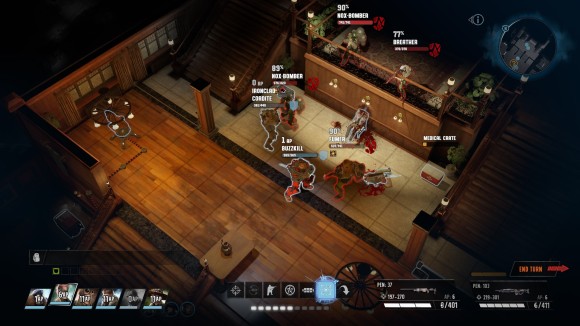
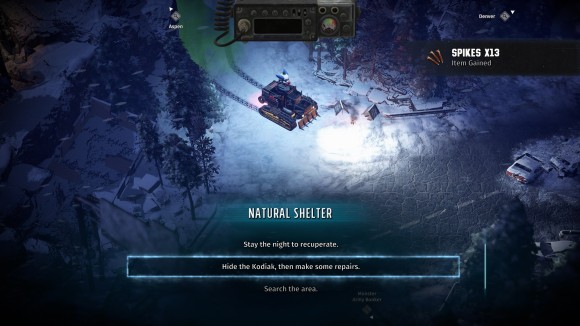
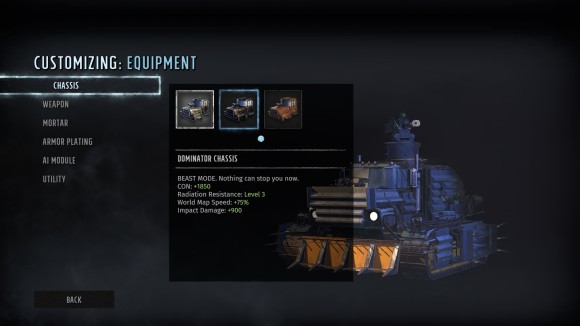
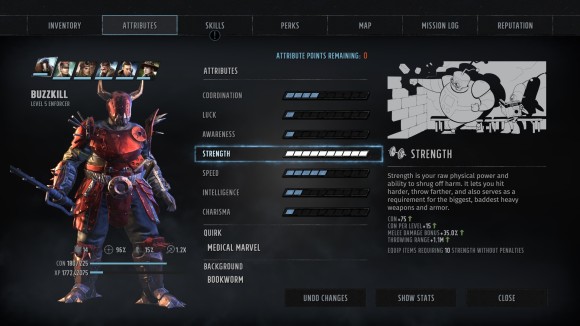
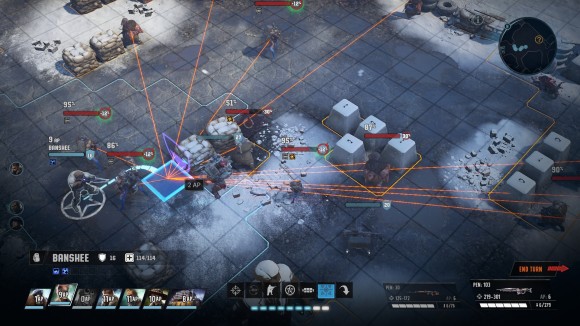
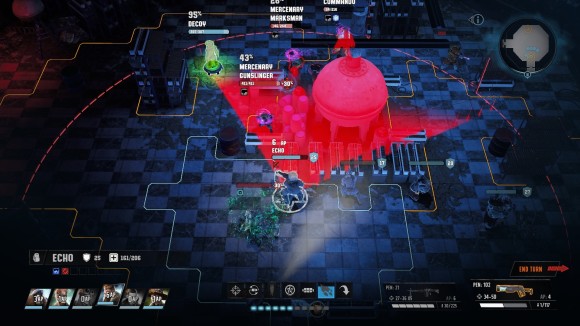
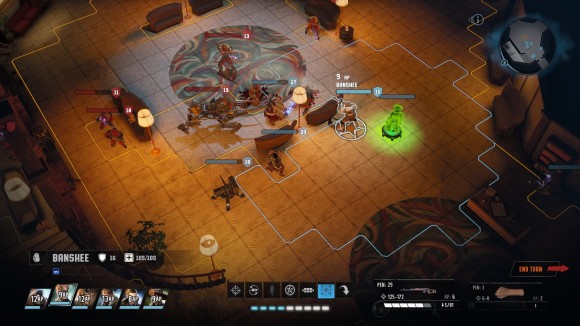
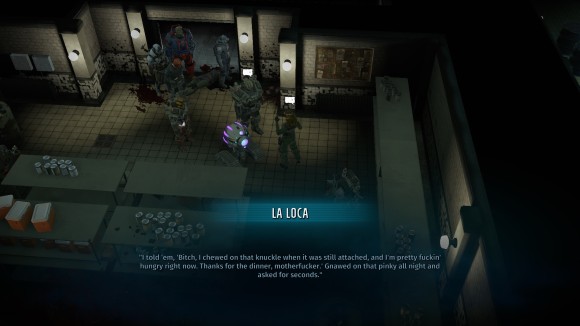
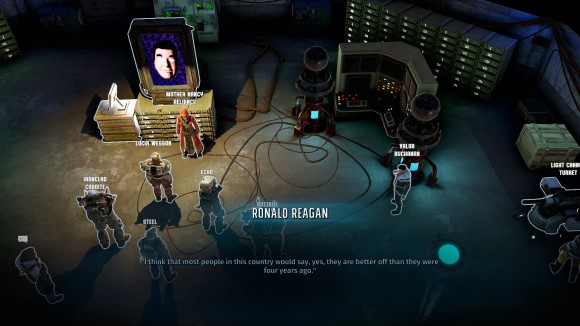
Glad to see you came back in full!
My favourite part about Wasteland 2 was that it let me make a professional sniper who was great with sniper rifle but didn’t have enough AP to shoot it even once. I’ve restarted the game and was turned off by an extremely bland combat, juvenile writing and the whole ugliness of the game. Also the story made little sense and I’m surprised people think Bethesda Fallout games are too frivolous with consistency and realism. Cause Wasteland 2 was just horrible in that regard and also had toaster repair skill. You say combat is fine but meh, I don’t know. It’s not a tactics game like XCOM where you can ignore most of the story, those dialogues you post are too cringey.
Lol, robot Raegan. fou
The combat is fine in the same way that the old Fallout combat is fine, in that there are multiple ways to break it and turn it into a series of hilarious one-sided massacres. Doing so requires understanding the character system and a certain amount of min-maxing, which I happen to really really enjoy – I liked hoovering up XP from lockpicking and hacking and disarming traps and becoming more powerful, because sometimes the most basic example of “number go up” is enough to hook me. If you cannot turn your brain off for the talky bits, though, this isn’t remotely going to save Wasteland 3.
I always viewed Fallout combat as a good part of a huge mix. As in unlike, say, BioWare or even Infinity Engine games combat is affected by all the other systems and vice versa. You steal enemy ammo and lure him to a place where his enemies live. Or during the combat you miss your target, hit some neutral character and now his faction hates you. You wouldn’t play a series of combat encounters from Fallout (unless you play Fallout Tactics which is a little different) for their own sake. If there’s no interesting exploration, story, dialogue, choices and consequence then devs probably should have made XCOM/Battle Brothers/etc style game.
Even Bethesda Fallout games have some of this interconnection of mechanics. That description of Raegan robot faction broke me because it’s exactly what Fallout 3 did but with all the subtlety and finesse removed. InXile, you were the chosen one, you were supposed to outdo AAA safe and boring RPGs, not to outdumb them.
I found this considerably more enjoyable than Wasteland 2, with the same caveats as mentioned.
It was disappointing that there were limits on the cool things you could do with characters builds in some cases (some weapons are just not that effective) and it was overall a bit clunky, but the combat really was fun to play around with. Having ridiculous one-shot damage with my sniper was a particular highlight, some notable shots knocking out most of the healthbars of a scorpitron or a major boss.
One other notable thing – the game’s use of music was quite nice, putting some good western tracks very much in the foreground of a handful of fights and really setting the mood up well. Just baffling that it /wasn’t/ the boss fights.
I also enjoyed the bite-size nature of the whole thing. I can certainly get stuck in for a while with an RPG I love, but given this was sailing mainly on its mechanics, I appreciate the moderate size.
The music was good in places, but really weirdly used. The best one is wasted on a random fight in a prison.
I had very much written this off given that I did not really make it past the prologue of the first, but I’m now actually intrigued to give it a go, especially as I am likewise enjoying the xbox game pass.
(Also, I’m loving the fact you are writing reviews again!)
If you already have the game pass then it costs nothing except bandwidth. The one thing to keep in mind is that the first couple of hours of the game are extremely representative and it doesn’t get any better than that, so it’s fine to drop it if you’re not enjoying it.